Abstract
The purpose of this paper is to analyse the impact of leadership and motivation on the organisational culture of Repsol and to so, this report concentrates on some theories including autocratic and participative leadership style, transformational and action centred leadership model, motivation theories of Maslow and Herzberg, and organizational culture, and so on. However, the second chapter focuses on the data collection process, questionnaire design, data analysis process, delimitations, and limitation of the research to recommend the company by evaluating data on the influence of these theories on the organisational culture of Repsol.
Introduction
A brief overview of Repsol TT Ltd
Lendio (2012) mentioned that Repsol TT Ltd was incorporated in Trinidad and Tobago in 1995 as a private company with limited liability by acquiring the shares of Atlantic LNG with titled as Repsol E&P T&T Limited, originally the company represented the Spanish multinational ‘Repsol’- a global giant of oil and gas exploration, development and marketing. Repsol (2011) added Repsol is the most prevalent private company in this region that enjoys exclusive mining rights and wide-ranging oil-producing facilities in about seven offshore exploration blocks of Trinidad and Tobago with an area of 2,363 square kilometres.
During 2005, Repsol TT Ltd turned into the foremost operator in the Caribbean region with offshore oil refineries and liquidation plants; in addition, the operation continue to grow in the hydrocarbon industry and it has to be converted into consolidated as the biggest oil company in private sector in terms of tremendous revenue generation, GDP contribution and employment opportunity creation.
In 2009, the company expanded its operation in Trinidad and Tobago with three new exploration fields like Teak, Samman and Poui and before starting the operation of these oil fields, the company planned to conduct a social marketing campaign for the ‘Biodiversity Action Plan’ at the fishing areas and schools to educate people with environmental hazards. In 2010, identifying the prospect of a biodiversity action plan, the company allied with the media, academia and civil society and bring the significant resources into the public views that would assist them to get ready for future environmental and social impact due to global warming and climate change in Trinidad and Tobago
Sales Volume
According to the financial statement 2010, sales revenue from the products and services sales have increased from last year, which indicates this company is recovering and strengthening its financial position in the market; however, the following table provides more information about the profit margin of Repsol –

Operating expenses
This company failed to control its operating expenses and it is one of the main weaknesses of this company at the present moment;

Competitors
The presence of large competitors in the oil and gas exploration and marketing industry is one of the key threats for Repsol while the market position of the competitors is strong enough, for instance, BP is the third-largest integrated oil company and direct competitor, and Royal Dutch Shell is a competitor of REPSOL in most business areas.
Statement of the problem
Repsol has already turned into completely privatised and fortunate potency in oil and gas sector in Trinidad and Tobago, it demonstrated substantial flexibility at its long race in the hard conditions of competition in oil sector greater than before where diversification of hydro-chemical utilisation would demonstrate enormously imperative and it needs to invest more and more for research and development. However, Repsol (2011) and Maroto (2012) stated that Repsol purchased a total of 30% of the company bpTT; therefore, it has to restructure its organisational chart to develop a suitable workplace environment for the employees as well as for the leaders of this company.
Purpose of the study
The purpose of this study is to analyse the influence of the leader of Repsol TT to change organisational culture to introduce an effective diversity management system by knowing the effectiveness of the leadership, the position of the employees in this organisation, job satisfaction of the employees, staff retention rate, leadership style, leaders role in a difficult situation, organisational change and so on.
Objectives of the study
The Key objectives of this study are –
- To discuss the importance of leadership and motivation to reshape the organisational culture of Repsol to become a global market leader in the oil and gas exploration sector;
- How the leaders of Repsol motivate the employees to reduce staff turnover or increase employee retention rate;
- To identify what actions are considered most appropriate to the organisational culture of Repsol to operate in Trinidad and Tobago.
Definition of key concepts/terms
Robbins & Judge (2008) defined Leadership as the ability to influence a group toward the achievement of a vision or set of goals; Kotler & Armstrong (2006), Pitt (2001) and Pearce & Robinson (2006) stated the sources of this influence may be formal, but organizations need strong leadership and strong management for optimal effectiveness. However, Robbins & Judge (2008), Pitt (2001), Rowstrom (2011) and Pearce & Robinson (2006) further added that strong leadership is important to create visions of the future and to inspire the employees to gain a competitive advantage over the competitors and reach its goals within the desired time limit.
Research Methodology
Research Method
The purpose of this chapter is to provide a methodological framework to the impact of Leadership and Motivation on culture at Repsol; however, it needs to concentrate on numerous issues including data collection method, data analysis process, delimitations, limitation of the research, implementation and so on. However, this paper would follow a quantitative research approach to analyze the topic and it would also consider the research approach of Saunders, Thornhill and Lewis (2006) and Cohen, Manion & Morrison (2007) and the six main steps of Malhotra (2009) –
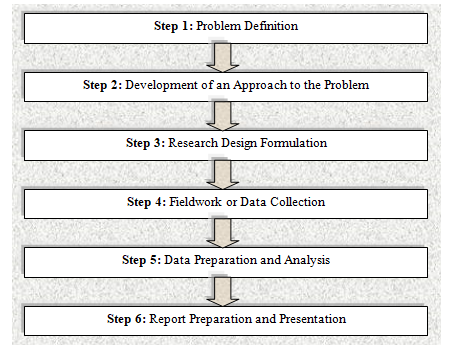
Data Collection Process
According to the view of Saunders, Thornhill and Lewis (2006) and Malhotra (2009), a personal interview or face-to-face interview is the best method of primary data collection, but in this case, the managers of Repsol have not sufficient time and interest to give their valuable time for this purpose; therefore, it needs to follow different data collection method. However, there are some other methods of primary data collection, which shows in the following figure –
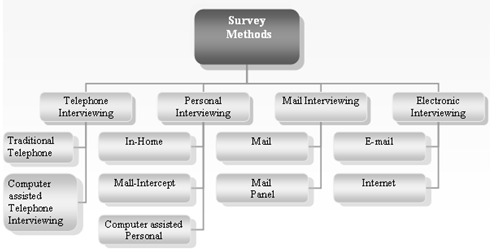
However, the researcher would apply the different alternative approaches to collect data, for instance-
- The researcher would contact the employees of Repsol for time to interview the target employees, but if they agree, then conduct a direct interview; otherwise, the researcher would distribute the questionnaire to the employees and request them to complete the survey form and sent it back;
- On the other hand, the research would contract with the call centre to help him with data collection;
The researcher would collect secondary data because Zikmund (2006) stated it is processed data and easy to access with less time; however, the researcher visit the website of Repsol to download consolidated financial statement 2010, and management reports. In addition, the researcher also visited an online library and other internet sources to collect secondary data, for instance, the International Journal of Management, Journal of Managerial Issues, and Journal of Social Psychology to get information about the impact of leadership and motivation on the culture.
Questionnaire Design
Saunders, Thornhill & Lewis (2006) stated that a questionnaire is one of the most important tools to survey to attain research objectives and proper outcomes; however, the researcher of this study would prepare a questionnaire with two parts, which include –
- Part A: It is designed with four simple introductory questions to gather information about the employees of Repsol;
- Part B: This part aims to assess the position and impact of leadership and motivation on the staff of Repsol and whether there need any change or not to recommend the company and draw a conclusion
Data Analysis process
The researcher would analyse the secondary data in a descriptive manner and compatible with the research topic and his experience; however, the survey form would be edited to remove the error from primary data on the impact of leadership and motivation on the culture at Repsol and analysed data by using Microsoft excel to represent with graphical presentation.
Scope of the Study
- The researcher of this study has the opportunity to discuss the impact of leadership style and motivation on the dynamic organisation Repsol is a global giant of oil and gas exploration;
- Identifying the challenges and opportunities related to leadership style on the selected company is also a significant aspect to address;
- It has scope to assess the impact of different leadership styles, such as participative, laissez-faire, autocratic, situational, transactional, and transformational leadership approaches;
- In addition, the respondent has scope to concentrate on many other issues to discuss the topic, such as the employee retention rate, job satisfaction aspects, diversity management, attitude of the employees and leader, team learning, and team effectiveness, development of performance, and effect of wage rate on the job satisfaction, and so on;
Limitation of the Research
- The key limitation to conducting the survey was the low response rate because the employees of Repsol were either busy or reluctant to cooperate by giving information regarding the impact leadership and motivation on organisational culture;
- The number of words was not sufficient to cover all issues on the leadership approach of Repsol;
- Moreover, the researcher had to complete the paper within a short deadline while primary data collection was a time-consuming process;
- Selection of exact secondary data, the scope of data analysis, and the broad analysis part were other limitations to formulate this thesis paper.
Literature Review
Leadership and motivation
The theory of leadership and motivation are interrelated with each other and both factors influence the employees to perform in their workplace (Robbins & Judge 2008; Hitt, Ireland & Hoskisson 2001; and Solomon, Bamossy & Askegaard 2001). However, there are many leadership theories to control the organisation, such as great man theory, trait theory, behavioural and contingency theory, participative leadership style, autocratic leadership style, situational leadership style, transactional leadership style, transformational leadership style, and so on (Rowstrom 2011; Robbins & Judge 2008; Johnson, Seholes & Whittington 2006; and Solomon, Bamossy & Askegaard 2001). However, Lewin (1939) categorized leadership styles into three groups –
- Autocratic Leadership: This is a traditional approach where leaders enjoyed ultimate power in case of decision-making and implementation of the strategies without consulting with staff (Cherry 2012; and Lewin 1939); therefore, subordinates or team members are bound to follow the decision of the top management (Robbins & Judge 2008; and Weihrich & Koontz 2005). In addition, the leaders do not take any feedback from the employees because they have vast knowledge and better understanding, which is one of the prime factors to become less effective and attractive to govern the organizations of developed countries in this way.
- Participative Leadership Style: On the other hand, Lewin (1939) also discussed this democratic leadership style, which is more relevant to modern firms where the leaders inform the employees about their plans and consider the feedback of the employees to decide to execute the strategies. In addition, this style motivates the employees to take part in decision-making along with problem-solving (Robbins & Judge 2008; Lewin 1939; Johnson, Seholes & Whittington 2006; and Nader 2012).
- Delegative (Laissez-Faire) Leadership: It is also known as the “hands-off¨ style and this style allows the employees to make their decision using discretionary power and perform their way;
- Transformational: this approach is very motivating for the employees who work with the transformational leader because leaders pay attention to the developmental needs of the employees and help them accordingly to achieve the vision of the company (Robbins & Judge 2008; and Pearce & Robinson 2006);
- Action centred leadership: Adair (1998) provided the ACL model, for instance –
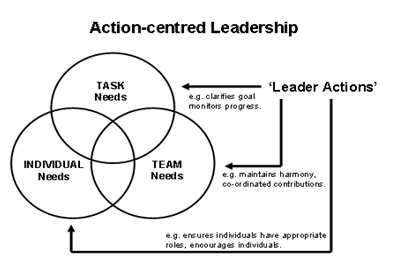
- Task needs: Mullins (2010, p.378) stated that leaders need to convey a message to the employees and clarify the objectives (describing the task, making a plan, allocating work and resources, ensuring quality) of the company to reach its expected profit margin; in addition, leaders would monitor the progress of the tasks as well;
- Individual needs: White (2012) and Katzenbach & Douglas (2000) stated that leaders ensure appropriate jobs for the employees, and encourage them; however, White concentrated on the development and training program staff, audience personal problems and contribution credit and rank;
- The team needs: Blanchard, Zigarmi, & Zigarmi (2004) and Mullins (2010) stated that leaders would co-ordinate the contribution of the employees, establish clear standards, uphold regulation, develop team spirit, and hearten a sense of objective.
Motivation Theories
Maslow’s Hierarchy of Needs Theory
This theory has established by Abraham Maslow that plays a vital role to motivate the human resources; however, this theory pointed out that every member of the organization has mainly five levels of needs that require fulfilling chronologically and fulfilment of one give raise to another – this theory has demonstrated in the following figure –
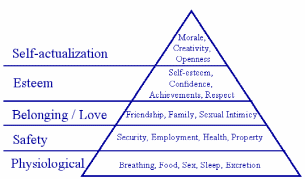
Herzberg’s Two-Factor Theory
Herzberg (2003) had tried to find out what do the employees want from their jobs and interviewed 200 respondents to assess when they felt good or bad about their jobs; however, the following figure discuss this issue more elaborately –
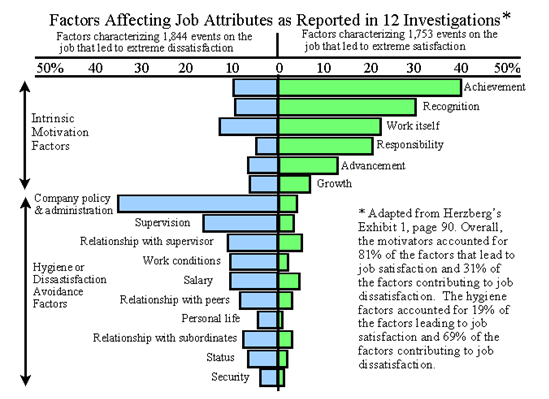
This is one of the most popular but controversial theory because he did not provide overall measure of satisfaction, and this theory is inconsistent with previous research and the research is overlooked the issue of productivity.
Organizational Culture
It refers to a system of shared meaning held by members that distinguish the organisation from other organisations and it includes some features that the organisation values, for instance, the degree to which staff are encouraged to be innovative and to exhibit precision, people-orientation, team orientation, aggressiveness, and stability (Robbins & Judge 2008; and Pearce & Robinson 2006). A leading culture gives an organisation its distinct personality and it conveys the core values that are shared by most of the employees of the company; however, in an as strong culture, the company’s core values are both intensely held and widely shared (Robbins & Judge 2008; Johnson, Seholes & Whittington 2006; Porter 2004; and Pearce & Robinson 2006). However, they further added that good organizational culture should include –
- Empowering employees
- Having a team orientation
- Having a clear strategic direction and intent
- Possessing a strong and recognizable vision
The Impact of Leadership on Organisational Culture
Malby & Fisher (2007) pointed out that leaders shape organisational culture or identity in different ways; however, Duygulu & Özeren (2009) stated that leaders play a vital role to develop good organisational culture and increase the innovative power of the employees, which reduce the profit margin of the company. Malby & Fisher (2007, p.7) argued that competent candidates for any job try to find out an organisation where the workplace environment would be suitable and the candidate would be able to show his competence because the leaders pay attention to the performance level of the employees.
Here, Malby & Fisher (2007, p.7) stated that leaders are both the architecture and the products of the culture of the company; thus, the activities of the top management has influenced value creation, good practice of corporate governance, ethics and corporate social responsibility, organisational norms and boundaries, relationship matter, and so on. However, Malby & Fisher (2007, p.7) used a complex systems view of culture to discuss the issues –
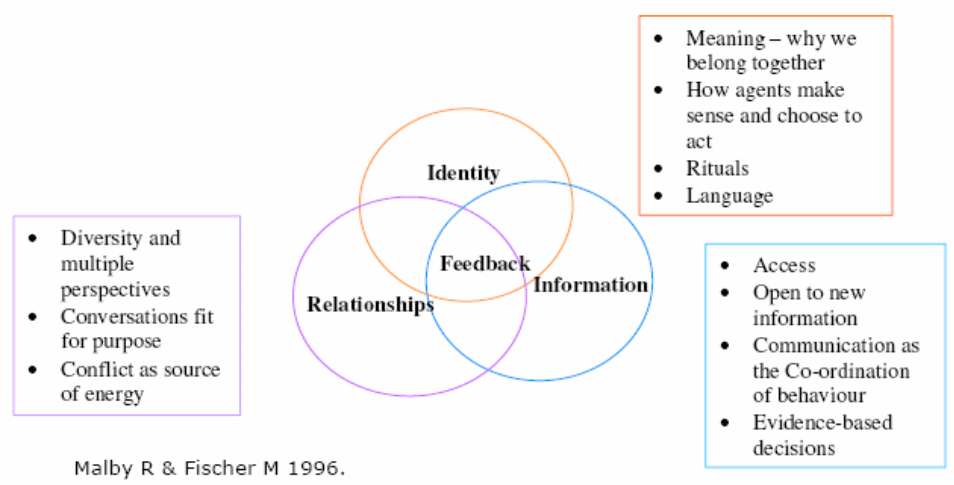
- Role of the founder on culture: The founders of the company have a significant impact on the culture and the ultimate source of the organisational culture is the creator of that firm because customs, traditions, general way of practice, for example, IKEA’s culture was shaped by the Ingvar Kamprad who grew up in the poor family, which influenced to build a vision of the company (Robbins & Judge 2008; and Pearce & Robinson 2006);
- Leadership practice to shape the culture: Most of the time, leaders take the decision to control the company, which impact the overall culture of the company, such as, leaders fixed selection process, perforce evaluation criteria, rewards and remuneration policy, training program, socialise the new employees, and so on;
- Role of top-management: In addition, the functions of the top-management have a great influence on the culture, for example, the attitude of the employees depend on top-management while they guide the staff about risk management, maintain a relationship with the customers, ware appropriate dress, and give rewards (Robbins & Judge 2008, p.583);
- Leaders influence on other areas: Ethical practice by the leaders is important to save the company from the difficult economic conditions; however, Enron collapsed due to leaders immoral activities and leadership failure;
- Guidance for effective learning: Robbins & Judge (2008) and Pearce & Robinson (2006) stated that culture is transmitted to employees in several ways, such as corporate storytelling by the leaders, rituals, and material symbols, communication, etc.
Findings and Results
The aim of this chapter is to assess the impact of leadership and motivation on the organisational culture of Resold through a survey conducted amongst 100 respondents, who are either managers or employees of the company.
Part A: Introduction with the Respondents
Question – 1a: Name, address, and cell phone number of the respondents
This question intended to introduce with the respondents, which was necessary for starting to conduct the survey effectively.
Question – 1b: Years of experience of the respondents
It was important to know the years of experience of the respondents because more experienced respondents would have a better knowledge about the position of the company in terms of leadership style and management of the employees. The survey suggests that 32 percent of the employees are working here for less than 3 years, 41 percent is working between 3 and 6 years, and 27 percent is working for more than 6 years.
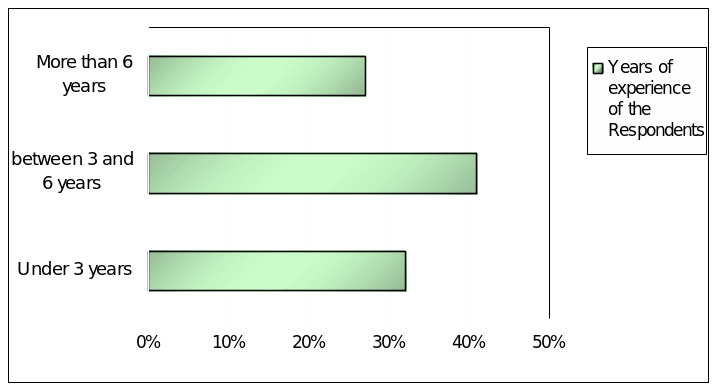
Question – 1c: Job position of the respondents
To know about the actual position of the business and evaluate its HR polices in staff management, it was essential to survey both managers and employees. It has been noted that 4 percent of the respondent was managers and 96 percent was employees:
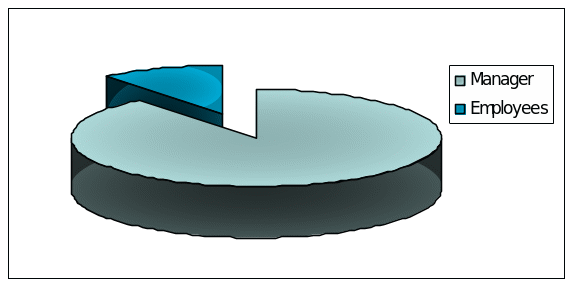
Question – 1d: Whether the respondents know about the theory of leadership, motivation, and organizational culture
It was essential to know before taking the views of the interviewees that whether they possess sufficient ideas in this area of the research, as surveying unskilled people will not enable the successful outcome of the study. In answering this question, 78 percent people said yes, 8 percent said no, and 14 percent said that they have limited knowledge.
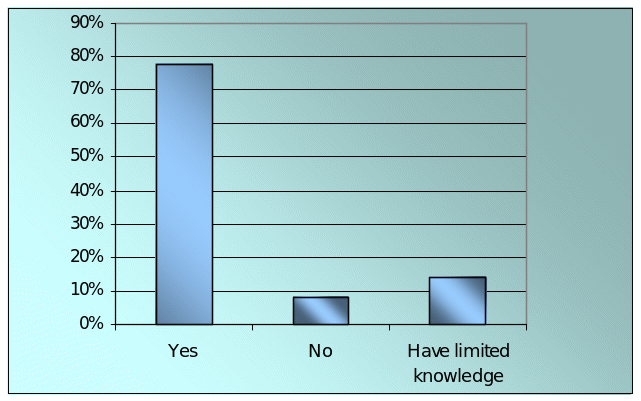
Part B: Respondents’ View
Question – 2: Whether the respondents agree that leadership and motivation is significant to control the organisation
It is observed from the conducted research that most people in this company believes leadership and motivation as the significant tool to control the organisation as a whole; as a result, 35 percent people agreed with it, 52 percent people strongly agreed with it, and 10 percent people were neutral. On the other hand, 3 percent people disagreed to this idea and none has strongly disagreed:
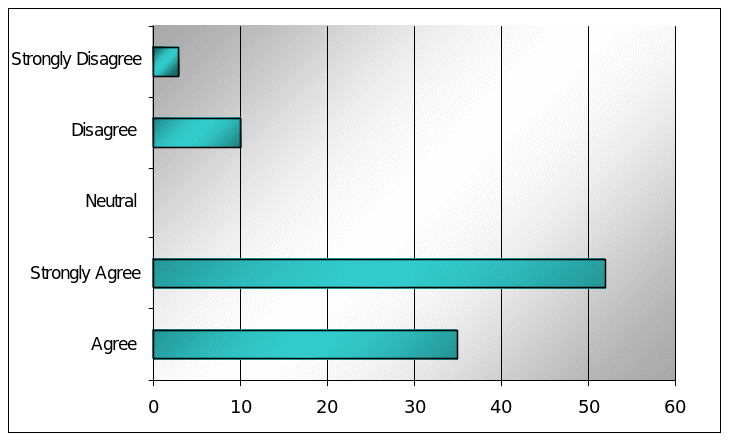
Question – 3: Whether the respondents agree that staff need to be supervised personally to develop their efficiency
There has been a mixed reaction achieved by this proposed question, and most of the respondents have provided a range of different views. To specify, 20 percent people agreed to the idea that staff need to be supervised personally to develop their efficiency, whereas 29 percent strongly agreed to this point. On the other hand, 12 percent people were neutral, and 21 percent disagreed and 18 percent strongly disagreed to this.
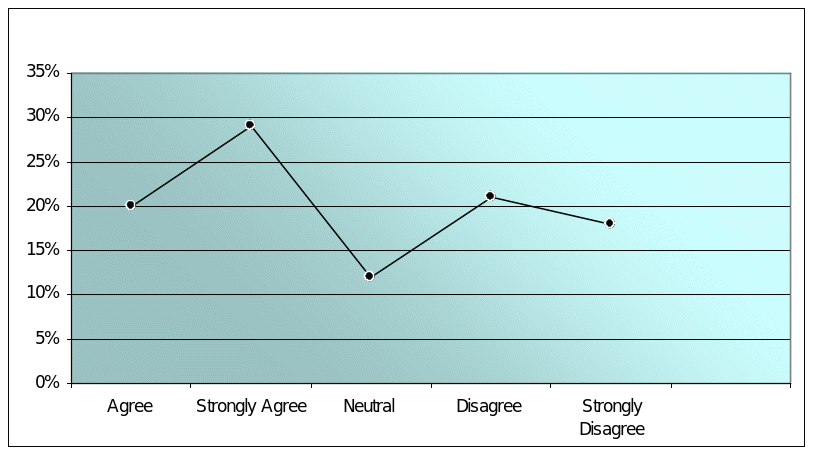
Question – 4: To what extent the respondents agree that liberal leadership approach is effective to inspire them to meet objectives
It was widely accepted by the majority of the respondents that liberal leadership approach is effective to inspire them to meet objectives, and this style is greatly motivational to reinforce working spirit of the human resources. As a result, 31 percent people agreed to this point, 46 percent people strongly agreed, and no one was neutral. Conversely, 15 percent people disagreed, and 8 percent strongly disagreed to this statement:
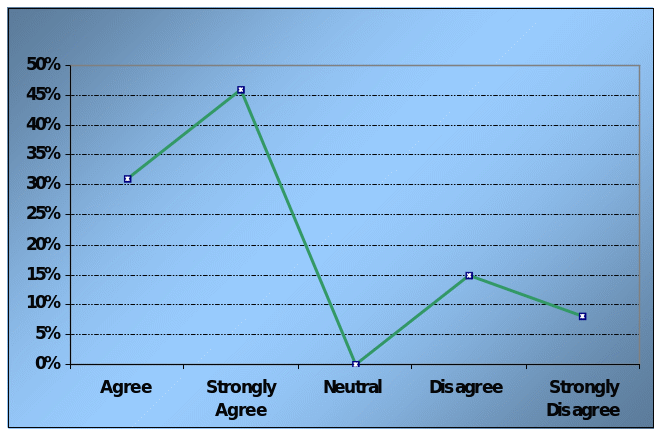
Question – 5: Whether the respondents agree that management of Repsol considers the view of employees in case of decision-making
Consideration of the views of employees in case of decision-making is a part of delegation of authority, and this mostly happens in businesses that focus on democratic leadership style; however in case of Repsol it is seen that the company does not follow any particular leadership style strictly, rather, prefers the use of a mixed form of style. As a result, according to the survey, it adopts authoritative style in departments where the employees are not so skilled and adept, and delegates authority where employees are experienced, creative, and hard-working. This is reflected in the survey forms where 34 percent people agreed to this, 16 percent people strongly agreed to this, 5 percent were neutral, 31 percent disagreed, and 14 percent strongly disagreed to it.
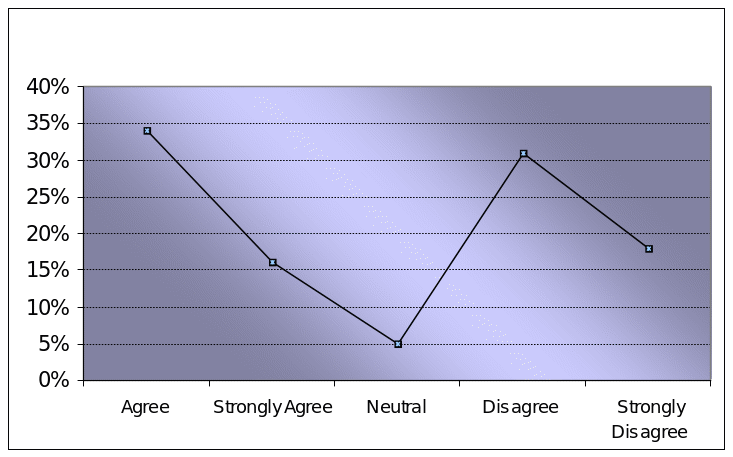
Question – 6: Whether the respondents agree that Repsol ensures equal opportunity for all to motivate employees to develop organizational culture
This question was asked with intention to find out the extent to which the company is committed towards ethically leading its human resources without any potential bias regarding gender, race, nationality, or religion. In replying to this point, 40 percent people agreed, 25 percent people strongly agreed, and 7 percent people remained neutral. Conversely, 24 percent disagreed to this point and 4 percent strongly disagreed. As still, a substantial number of respondents believe that it should ensure further equal opportunity, the company must focus on issues of diversity management and ascertain that employees from diverse ethnic backgrounds and cultures can cope up better with the organizational culture.
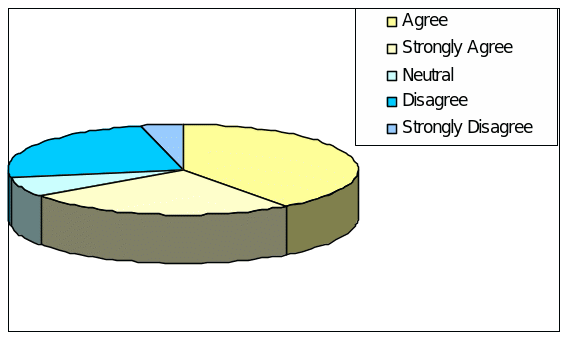
Question – 7: Whether the respondents think that the members of Repsol should work as a team to resolve problems
It is notable from the conducted survey that a large number of the respondent thinks that teamwork is essential for problem- solving and overall corporate success. As a consequent effect, 32 percent people agreed and 56 percent people strongly agreed to this point. On the other hand, 5 percent remained neutral, 3 percent disagreed, and 4 percent strongly disagreed to it.
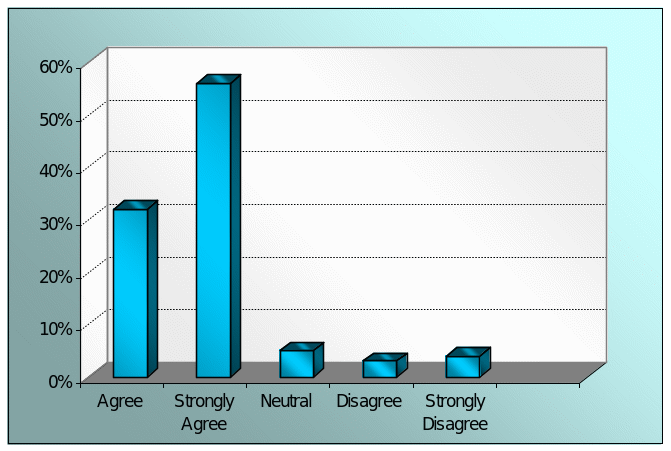
Question – 8: Whether the respondents think existing leadership and motivational process is outstanding to ensure effective workplace environment
Ranges of reactions are received from this proposed question; some people suggested that the existing leadership and motivational process is wonderful for staff retention, while others emphasized further development of this. Here, 23 percent people agreed to this, 32 percent strongly agreed to this, 15 percent remained neutral, whereas 20 percent disagreed and 10 percent strongly disagreed to it.
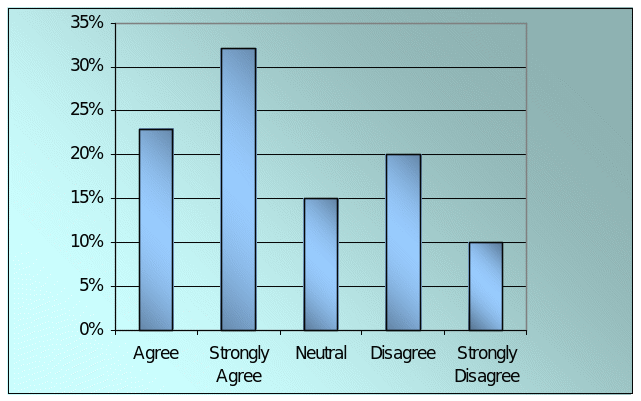
Question – 9: Whether the respondents agree that employees of Repsol have job satisfaction and staff retention rate is high
This question aimed to find out the performance of the company in terms of HR management the rate of labour turnover; it is notable that 41 percent people agreed that the employees have job satisfaction, whereas 32 percent strongly agreed to this and 2 percent remained neutral. However, 19 percent disagreed to this and 6 percent strongly disagreed:
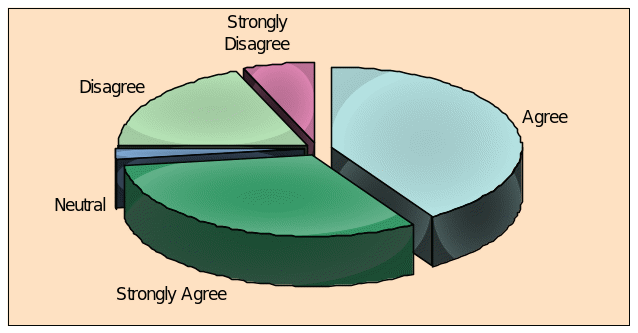
Question – 10: To what extent the respondents think that Repsol need to change leadership style to develop organizational culture
About 14 percent people agreed to this, 27 percent strongly agreed, and 21 percent remained neutral, whereas 20 percent disagreed and 18 percent strongly disagreed to this point:
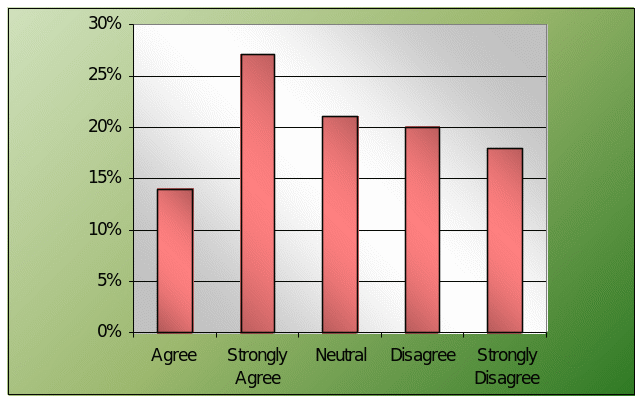
Conclusion
Recommendations
- The leader of Repsol should follow democratic leadership approach instead of an Autocratic approach to motivate the employees;
- As Repsol TT is the owner of a 30% share of BPTT, it should restructure the organisational structure to create a better working environment, if necessary it should modify job responsibilities according to the ACL model;
- The management should arrange a training programme for the employees to work as a team and develop communication skills, which will help the company to increase job satisfaction and reduce staff turnover and other internal problems;
- It should develop a diversity management system and ensure equal opportunity for all employees to develop good organisational culture.
Conclusion
It is important to note that Repsol is currently in a quite stable condition from the overall business perspective due to effective leadership and motivation practice influence the culture of this company; as a result, it does not require any massive organisational change presently.
Reference List
Blanchard K, Zigarmi P, Zigarmi D 2004, Leadership and the One Minute Manager, HarperCollins, London.
Cherry, K. 2012, Lewin’s Leadership Styles. Web.
Cohen L., Manion, L., & Morrison, K 2007, Research Methods in Education, Routledge, New York.
Duygulu, E & Özeren, E 2009, The effects of leadership styles and organizational culture on firm’s innovativeness, African Journal of Business Management, Vol.3 no. 9, p. 475. Web.
Herzberg, F 2003, ‘One more time: How do you motivate employees?’, Harvard Business Review. Web.
Hitt, M. A., Ireland, R. D., & Hoskisson, R. E. 2001, Strategic Management, Thomson Learning, South-Western.
Johnson, G., Seholes, K., & Whittington, R. 2006, Exploring Corporate Strategy: Text & Cases, FT Prentrice Hall, London.
Katzenbach, J. R. & Douglas, S. 2000, The Wisdom of Teams: Creating the High-Performance Organization, Harperbusiness, London.
Kotler, P. & Armstrong, G. 2006, Principles of Marketing, Prentice-Hall of India Private Limited, New Delhi.
Lendio 2012, Repsol S.A. Company History. Web.
Lewin, K 1939, ‘Patterns of aggressive behaviour in experimentally created social climates’, Journal of Social Psychology, vol. 10 no. 2, p.271
Malby, B & Fisher, M 2007, How Does Leadership Make Difference to Organisational Culture and Effectiveness?. Web.
Malhotra, N. K 2009 Marketing Research- An Applied Orientation, Prentice-Hall of India Private Limited, New Delhi.
Maroto, M. D 2012, Analyzing Repsol. Web.
Mullins, L.J 2010, Action-centred leadership: Management & Organisational Behaviour, Pearson Education Limited, Essex.
Nader, R 2012, Leadership and Motivation. Web.
Pearce, J. A. & Robinson, R. B 2006, Strategic Management. 8th ed. London: McGraw-Hill.
Pitt, D. C 2001, ‘Leadership and Motivation: The Effective Application of Expectancy Theory’, Journal of Managerial Issues, vol. XIII no. 2.
Porter, M. E 2004, Competitive Strategy, The Free Press, New York.
Repsol 2010, Consolidated Financial Statements of REPSOL. Web.
Repsol 2010, Consolidated Management Report of Repsol. Web.
Repsol 2011, Our History. Web.
Repsol 2011, Repsol: Best European Energy Company for Leadership. Web.
Robbins, P. S. & Judge, A. T 2008, Essentials of Organizational Behaviour, Pearson Prentice Hall, London.
Rowstrom, J. W 2011, Organizational Behaviour: Human Behaviour at Work, The McGraw-Hill Companies, London.
Saunders, M., Thornhill, A., & Lewis, P. 2006, Research Methods for Business Students, FT Prentice Hall, London.
Solomon, M. R., Bamossy, G., & Askegaard, S. 2001, Consumer Behaviour, Prentice Hall, London.
Weihrich, H. & Koontz H 2005, Management a Global Perspective, Tata McGraw-Hill, New Delhi.
White, I. M 2012, Explicating John Adair’s Action Centred Leadership – Fieldwork Examples from Further Education. Web.
Zikmund, W. M 2006, Business Research Methods, Harcourt Publishers, Orlando.
Appendix
Questionnaire
Part A: Introduction with the Respondents
- Your name : …………………………………………
- Address : …………………………………………
- Cell phone : …………………………………………
- Please mention your years of experience:
- Under 3 years [ ]
- between 3 and 6 years [ ]
- More than 6 years [ ]
- Please select your job position –
- Manager [ ]
- Employees [ ]
- Do you know about the theory of leadership, motivation and organizational culture –
- Yes
- No
- Have limited knowledge
Part B: Respondents’ View
- Do you agree that leadership and motivation is significant to control the organisation?
- [Agree]
- [Strongly Agree]
- [Neutral]
- [Disagree]
- [Strongly Disagree]
- Do you agree that staff need to supervise personally to develop their efficiency?
- [Agree]
- [Strongly Agree]
- [Neutral]
- [Disagree]
- [Strongly Disagree]
- To what extent you agree that liberal leadership approach is effective to inspire them to meet objectives.
- [Agree]
- [Strongly Agree]
- [Neutral]
- [Disagree]
- [Strongly Disagree]
- Do you agree that management of Repsol considers the view of employees in case of decision-making?
- [Agree]
- [Strongly Agree]
- [Neutral]
- [Disagree]
- [Strongly Disagree]
- Do you agree that Repsol ensures equal opportunity for all to motivate employees to develop organizational culture?
- [Agree]
- [Strongly Agree]
- [Neutral]
- [Disagree]
- [Strongly Disagree]
- Do you think the members of Repsol should work as a team to resolve problems?
- [Agree]
- [Strongly Agree]
- [Neutral]
- [Disagree]
- [Strongly Disagree]
- Do you think existing leadership and motivational process is outstanding to ensure effective workplace environment?
- [Agree]
- [Strongly Agree]
- [Neutral]
- [Disagree]
- [Strongly Disagree]
- Do you agree that employees of Repsol have job satisfaction and staff retention rate is high?
- [Agree]
- [Strongly Agree]
- [Neutral]
- [Disagree]
- [Strongly Disagree]
- To what extent you think that Repsol need to change leadership style to develop organizational culture.
- [Agree]
- [Strongly Agree]
- [Neutral]
- [Disagree]
- [Strongly Disagree].